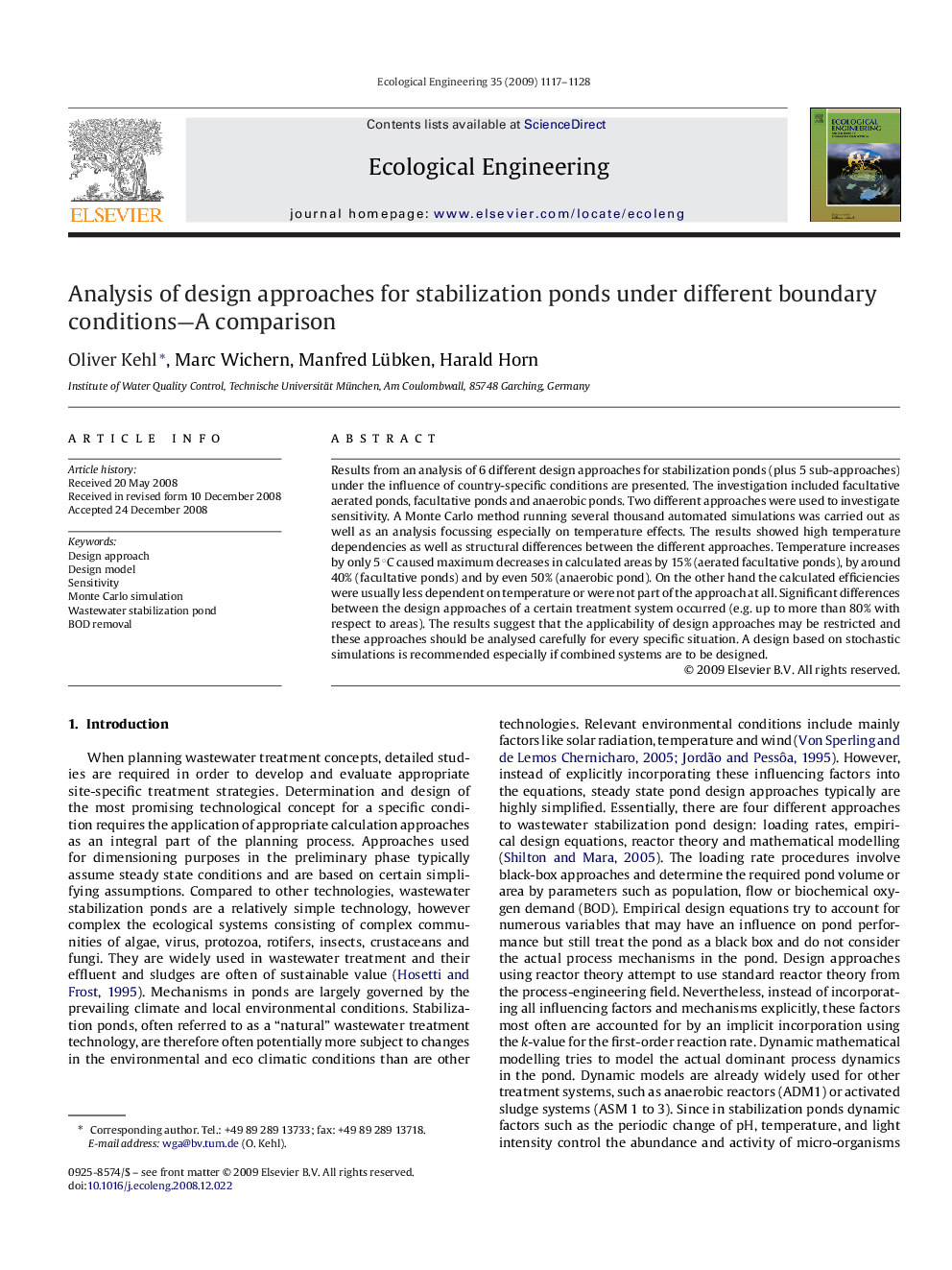| Article ID | Journal | Published Year | Pages | File Type |
|---|---|---|---|---|
| 4390829 | Ecological Engineering | 2009 | 12 Pages |
Results from an analysis of 6 different design approaches for stabilization ponds (plus 5 sub-approaches) under the influence of country-specific conditions are presented. The investigation included facultative aerated ponds, facultative ponds and anaerobic ponds. Two different approaches were used to investigate sensitivity. A Monte Carlo method running several thousand automated simulations was carried out as well as an analysis focussing especially on temperature effects. The results showed high temperature dependencies as well as structural differences between the different approaches. Temperature increases by only 5 °C caused maximum decreases in calculated areas by 15% (aerated facultative ponds), by around 40% (facultative ponds) and by even 50% (anaerobic pond). On the other hand the calculated efficiencies were usually less dependent on temperature or were not part of the approach at all. Significant differences between the design approaches of a certain treatment system occurred (e.g. up to more than 80% with respect to areas). The results suggest that the applicability of design approaches may be restricted and these approaches should be analysed carefully for every specific situation. A design based on stochastic simulations is recommended especially if combined systems are to be designed.
